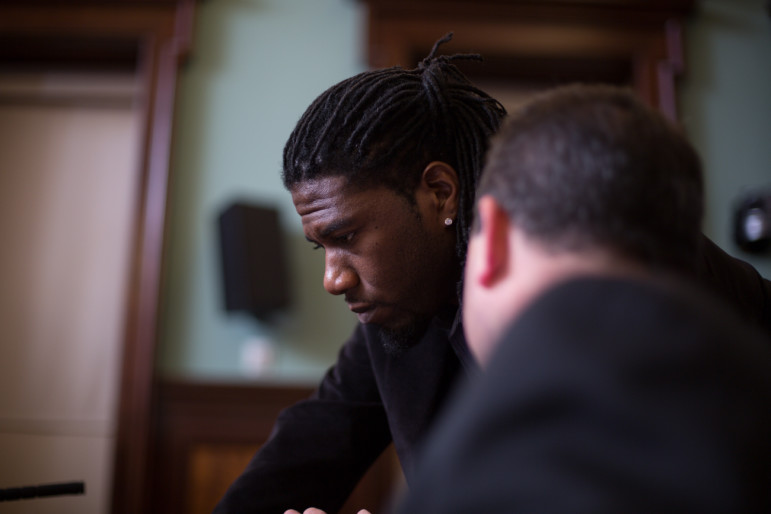
William Alatriste/NYC Council
Brooklyn's Jumaane Williams abstained.
This afternoon, the subcommittee on zoning approved a revised version of the East New York Community Plan, with five voting in favor and Councilmember Jumaane Williams abstaining, explaining he needed more time to review the changes. The reformed plan, which is likely to slide easily through City Council next week, is the result of intense negotiations between the de Blasio administration and East New York City Councilmember Rafael Espinal.
“From the start, I told my community that I would fight for a better plan, one that wasn’t just about housing but was about rebuilding a neighborhood that had been neglected for decades,” said Espinal. “I fought for a better plan, and I am proud that what we are voting on today is vastly better than the one sent to us by City Planning.”
The new plan does not meet the demand of East New York community groups in the Coalition for Community Advancement for a guarantee of sufficient subsidy to ensure affordability at 50 percent of the more than 6,000 units projected to be created by the rezoning. It does, however, boost the number of guaranteed subsidized units from 1,200 to 1,300, with possibly more from another nearby public site, in addition to any affordable units created by the city’s new mandatory inclusionary housing policy.
The city agreed to exclude the controversial Arlington Village site from the rezoning area and set aside roughly 21 additional units for families making below 50 percent AMI on public sites. But the Coalition for Community Advancement said it was “deeply disappointed” that the administration did not increase the number of units on public sites for families making less than 30 percent AMI.
“These families make up a third of our residents and are being left out of the plan. The City said that this is the best that they could do. We disagree,” said the Coalition in a statement. “Just because it is difficult to address these affordability levels, it doesn’t mean we shouldn’t try new approaches and invest more subsidies dollars in New York City’s neediest neighborhoods.”
On the other hand, the plan does address the concerns of neighborhood groups about the potential loss of industrial space by preserving parts of an industrial zone on Liberty Avenue, as well as answers their calls for a program setting aside discounted space for local businesses in new developments.
Altogether, the city will dedicate more than $250 million in capital investments for infrastructure projects including high-speed broadband and sewer system upgrades, park renovations, the development of a multi-purpose community center at 127 Pennsylvania Avenue, and—a win for advocates—the creation of a new childcare center. And more than $17 million has been set aside for improvements at existing schools—but only one new school, so East New York can still expect overcrowding, according to the Environmental Impact Statement.
A major step forward for the de Blasio administration’s affordable housing agenda, the revised plan is also likely to set a precedent for the next fourteen other neighborhoods targeted for an upzoning.








